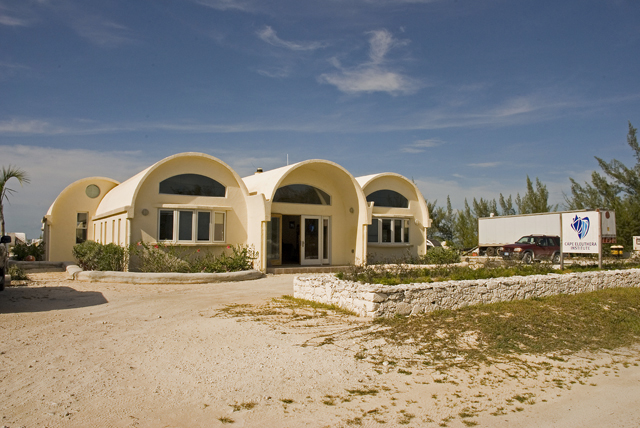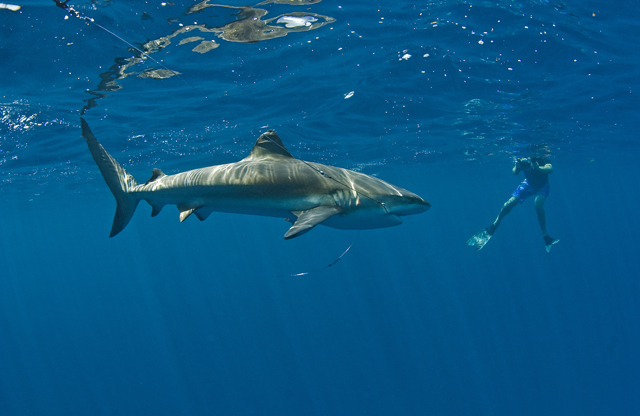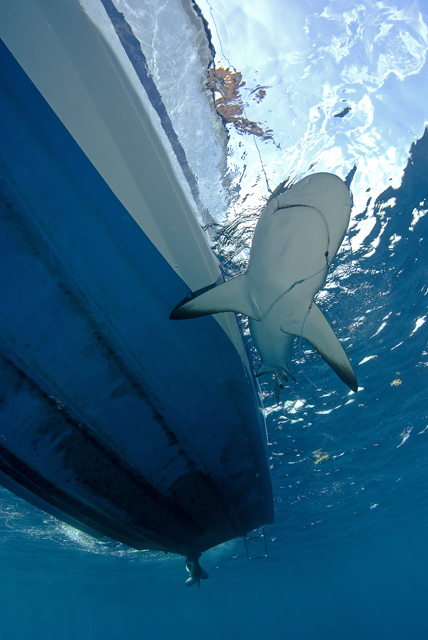Marine Life & Conservation Blogs
Our Future
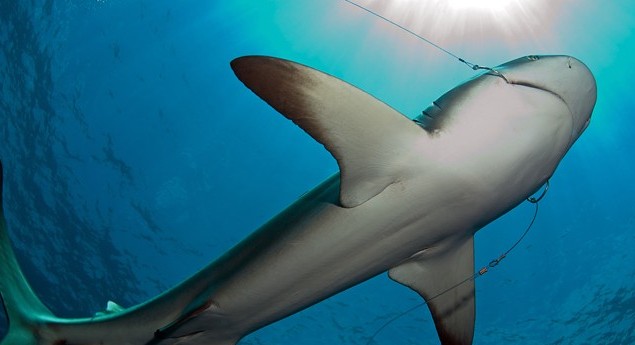
Concerns about natural resources and diminishing food supplies is at the forefront of every conscientious mind. But not everyone is taking a back seat view.
The Cape Eleuthera Foundation has been set up as a school and research institute exploring, improving and putting into practice natural ways of living and existing from our environment. Research Associate, Edd Brooks, said ‘our goal is to be 100% waste-free’. I was surprised to find such an interesting and worthwhile facility hidden away on Eleuthera, a remote island in the Bahamas, more famous for its links with Mariah Carey’s wedding rather than ecological breakthroughs.
The Foundation’s philosophy is to develop and build a number of systems that can sustain a community using only natural resources whilst minimising negative environmental impact. So in a nutshell, they have gone totally ‘green’ and are producing all their own food by aqua/agricultural means and then recycling any waste products to produce more food. It’s basically a closed loop system. 100% of all their power, for heating and lighting, is produced from Solar Energy and Wind Turbines. Bio Diesel (Vegetable Oil) is used to fuel any transportation, i.e. boats and trucks. Water for drinking and sanitation is captured from rainwater and 75% of the wood they’ve used to build the campus was grown from Casuarina Trees, an invasive species most people just disregard and burn.
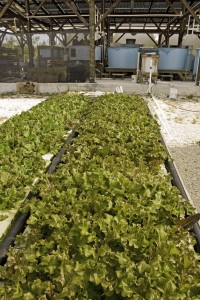
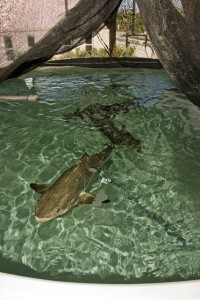 Surely this kind of research and development centre is where our future lies? Students from all over the world come and stay at the facility to conduct project work for schools, colleges and university degrees. Visiting Researchers and Scientists have a complete working laboratory at their disposal. This is the perfect environment for kids looking at careers in marine biology and related topics. It’s purely a ‘not for profit’ educational and research lab. Students and Researchers have to pay for the privilege but where better to conduct studies than a giant outdoor workshop in the Bahamas! Donations from privately owned businesses and organisations help support any new equipment purchases and building expansions.
Surely this kind of research and development centre is where our future lies? Students from all over the world come and stay at the facility to conduct project work for schools, colleges and university degrees. Visiting Researchers and Scientists have a complete working laboratory at their disposal. This is the perfect environment for kids looking at careers in marine biology and related topics. It’s purely a ‘not for profit’ educational and research lab. Students and Researchers have to pay for the privilege but where better to conduct studies than a giant outdoor workshop in the Bahamas! Donations from privately owned businesses and organisations help support any new equipment purchases and building expansions.
The Campus itself is basically split into two areas. The research centre has two 12-bed dormitories, timber framed classrooms, a common area, kitchen/catering facilities and gardens. The school has two wings. Each can accommodate up to 12 students. There is also a computer room, library, presentation rooms and wet and dry labs for research work. All within a stone’s throw of the sea.
A brand new Diving Centre has just been completed. It’s based in an impressive wooden building by the jetty. They also have 6 boats ranging from 19ft-40ft and 24 Sea Kayaks, used for 9-day school expeditions that circumnavigate the southern tip of Eleuthera.
There are about a dozen ongoing research programmes revolving around the marine environment. Aquaculture is the largest and most important ongoing project. Present worldwide fishing quotas are well exceeding regenerative capabilities (we have approx 50 years of wild fish stocks left). Although not a new concept, Aquaculture (fish farming) may well be the key. The first task is to find a species of fish that grows fast and doesn’t eat too much in the process. It also needs to be resilient to infection and disease. Cobia (Rachycentron canadum) is a pelagic species that grows up to 2m in length and can weigh as much as 68kg. It has a high food conversion ratio of 1kg of body mass for every 1.3kg of food it eats. The firm, white flesh is also very tasty and has become extremely popular in restaurants (prices are around $10-00 per kilo).
In 2003 the Institute began building a massive 3,000 metre/squared holding cage for the Cobia. The metal framework was positioned in 30 metres of water 1.5 miles off the coast by the Exuma Sound. This area is known to have reasonably strong currents and waves. Constant water movement helps prevent algae growth, which in turn reduces the risk of disease and parasites. Some of the young fish were lost in transit but around 10,000 fingerlings made it to the cage. Through 2005 the fish grew rapidly. Divers performed regular maintenance checks twice daily, cleaning away algae and taking out any dead or diseased fish. Fish mortalities were mainly due to poor quality feed. Then a Hurricane struck the island. Divers couldn’t get out to clear away the dead fish, which in turn, attracted the predators. Bull Sharks bit through the nets to get to the dead fish. More than 75% of the Cobia crop escaped through the holes. It was also a little disconcerting for the divers when they came face to face with a hungry Bull Shark inside the cage!
Later this year they will introduce a batch of home grown Cobia to the holding cage. To combat the Shark problem they have set up their own artificial ‘eco-system’ inside the cage. Groupers will eat any sick or dying fish before the Sharks are attracted and Gobies and Shrimp will act as cleaning stations to keep fish healthy.
Bonefish (Albula volpes) mortality rates is another high profile research project at the Institute. Florida Bonefish are a highly sought after, premier game fish that annually generates several billion dollars of revenue. Pound for pound they are known to be the best fighting fish in the ocean. They can grow up to 104cm in length and weigh 10kg. It’s mainly caught for sport and then released. The flesh itself isn’t considered to be very tasty. The Bonefish lives in shallow inshore tidal flats and co-exists with its main predator, the juvenile Lemon Shark. Part of the project is looking at the impact catch-and-release angling is having on the mortality rate of Bonefish. It’s been found that the stressed Bonefish are releasing a chemical that the Lemon Sharks are ‘homing in’ on. Once Students have identified this chemical handling and release methods can be adapted to stop the fish getting stressed.
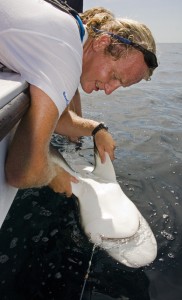
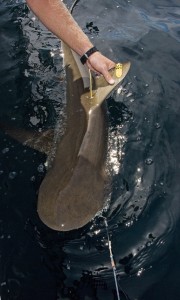 Edd’s primary research project involves monitoring the diminished Shark populations in the Bahamas. There has been a huge amount of worldwide media coverage highlighting the current plight of Sharks. Hundreds of thousands of Sharks are being slaughtered each year just for their fins. The Bahamas totally banned commercial Shark fishing in 2004. Long lining was also banned way back in 1993. But ‘local’ Shark numbers are still declining. Edd thinks the majority of Bahamian Sharks make long migrations into other territorial waters where they might not be protected. This specifically affects species like Tigers, Oceanics and Hammerheads. There is also the possibility that coastal tourism development is having an impact on Shark nurseries and inevitably this has a knock-on effect.
Edd’s primary research project involves monitoring the diminished Shark populations in the Bahamas. There has been a huge amount of worldwide media coverage highlighting the current plight of Sharks. Hundreds of thousands of Sharks are being slaughtered each year just for their fins. The Bahamas totally banned commercial Shark fishing in 2004. Long lining was also banned way back in 1993. But ‘local’ Shark numbers are still declining. Edd thinks the majority of Bahamian Sharks make long migrations into other territorial waters where they might not be protected. This specifically affects species like Tigers, Oceanics and Hammerheads. There is also the possibility that coastal tourism development is having an impact on Shark nurseries and inevitably this has a knock-on effect.
Around ten times a month Edd sets a buoyed long line with around 30 baited hooks. After one and a half hours the line is hauled in and any Sharks caught are recorded, tagged and released. Some are fitted with simple acoustic tracking devices. Edd surgically implants the small transmitters inside the Sharks. Edd has also placed compact VR2 receivers (Hydrophones) at certain points around Eleuthera. These listen out for any ultrasonic pings coming from the tagged Sharks. The recorded information is then downloaded onto his Computer back at base. The receiver records the time stamp and the ID number of the Shark as it passes. He can see any repetitive patterns and habitual movements that are forming. This year Edd is mainly focusing on the benefits of using baited remote underwater video surveys (BRUVS) to check on Shark numbers instead of long lining. BRUVS are far less stressful for the Sharks as there is no direct contact. His research will hopefully be used as a basis for other studies. Monitoring these movements will provide information on critical periods in Shark development so guidelines/restrictions can be put in place to protect the Sharks habitat.
Other current marine related projects include the population recovery of the Spiny Sea Urchin (Diadema antillarum), Patch Reef preservation, Lionfish surveys, Aquaponics for growing plants and restoration of the now thriving Wetland area.
It’s a known fact that our natural resources are running out fast. In the next few decades any studies made by R & D facilities like the Institute are going to be invaluable. Their findings may well be shaping our future. Long term it looks as though we could all be in for a bumpy ride.
Information
Edd is putting together a Shark tagging/research programme for visiting divers. This will give them a chance to go out on the boats, bait the lines, tag the Sharks and basically find out more about Shark ecology. They will also get a tour of the institute and presentations about ongoing research projects. The lucky one’s might even get a homegrown banana from the ‘poo’ garden!
Contact Details
Website: www.ceibahamas.org
E-mail: info@ceibahamas.org
Tel: 609 945 0710
More Information
Website: www.islandschool.org
Website: www.dcmsbahamas.org
Website: www.capeeleutherafoundation.org
Marine Life & Conservation Blogs
Creature Feature: Dusky Shark

 In this series, the Shark Trust will be sharing amazing facts about different species of sharks and what you can do to help protect them.
In this series, the Shark Trust will be sharing amazing facts about different species of sharks and what you can do to help protect them.
This month we’re taking a look at the Dusky Shark, a highly migratory species with a particularly slow growth rate and late age at maturity.
Dusky sharks are one of the largest species within the Carcharhinus genus, generally measuring 3 metres total length but able to reach up to 4.2 metres. They are grey to grey-brown on their dorsal side and their fins usually have dusky margins, with the darkest tips on the caudal fin.
Dusky Sharks can often be confused with other species of the Carcharhinus genus, particularly the Galapagos Shark (Carcharhinus galapagensis). They have very similar external morphology, so it can be easier to ID to species level by taking location into account as the two species occupy very different ecological niches – Galapagos Sharks prefer offshore seamounts and islets, whilst duskies prefer continental margins.
Hybridisation:
A 2019 study found that Dusky Sharks are hybridising with Galapagos Sharks on the Eastern Tropical Pacific (Pazmiño et al., 2019). Hybridisation is when an animal breeds with an individual of another species to produce offspring (a hybrid). Hybrids are often infertile, but this study found that the hybrids were able to produce second generation hybrids!
Long distance swimmers:
Dusky sharks are highly mobile species, undertaking long migrations to stay in warm waters throughout the winter. In the Northern Hemisphere, they head towards the poles in the summer and return southwards towards the equator in winter. The longest distance recorded was 2000 nautical miles!
Very slow to mature and reproduce:
The Dusky Shark are both targeted and caught as bycatch globally. We already know that elasmobranchs are inherently slow reproducers which means that they are heavily impacted by overfishing; it takes them so long to recover that they cannot keep up with the rate at which they are being fished. Dusky Sharks are particularly slow to reproduce – females are only ready to start breeding at roughly 20 years old, their gestation periods can last up to 22 months, and they only give birth every two to three years. This makes duskies one of the most vulnerable of all shark species.
The Dusky Shark is now listed on Appendix II of the Convention on the Conservation of Migratory Species (CMS), but further action is required to protect this important species.
Scientific Name: Carcharhinus obscurus
Family: Carcharhinidae
Maximum Size: 420cm (Total Length)
Diet: Bony fishes, cephalopods, can also eat crustaceans, and small sharks, skates and rays
Distribution: Patchy distribution in tropical and warm temperate seas; Atlantic, Indo-Pacific and Mediterranean.
Habitat: Ranges from inshore waters out to the edge of the continental shelf.
Conservation status: Endangered.
For more great shark information and conservation visit the Shark Trust Website
Images: Andy Murch
Diana A. Pazmiño, Lynne van Herderden, Colin A. Simpfendorfer, Claudia Junge, Stephen C. Donnellan, E. Mauricio Hoyos-Padilla, Clinton A.J. Duffy, Charlie Huveneers, Bronwyn M. Gillanders, Paul A. Butcher, Gregory E. Maes. (2019). Introgressive hybridisation between two widespread sharks in the east Pacific region, Molecular Phylogenetics and Evolution 136(119-127), https://doi.org/10.1016/j.ympev.2019.04.013.
Marine Life & Conservation Blogs
Creature Feature: Undulate Ray

 In this series, the Shark Trust will be sharing amazing facts about different species of sharks and what you can do to help protect them.
In this series, the Shark Trust will be sharing amazing facts about different species of sharks and what you can do to help protect them.
This month we’re looking at the Undulate Ray. Easily identified by its beautiful, ornate pattern, the Undulate Ray gets its name from the undulating patterns of lines and spots on its dorsal side.
This skate is usually found on sandy or muddy sea floors, down to about 200 m deep, although it is more commonly found shallower. They can grow up to 90 cm total length. Depending on the size of the individual, their diet can range from shrimps to crabs.
Although sometimes called the Undulate Ray, this is actually a species of skate, meaning that, as all true skates do, they lay eggs. The eggs are contained in keratin eggcases – the same material that our hair and nails are made up of! These eggcases are also commonly called mermaid’s purses and can be found washed up on beaches all around the UK. If you find one, be sure to take a picture and upload your find to the Great Eggcase Hunt – the Shark Trust’s flagship citizen science project.
It is worth noting that on the south coasts, these eggcases can be confused with those of the Spotted Ray, especially as they look very similar and the ranges overlap, so we sometimes informally refer to them as ‘Spundulates’.
Scientific Name: Raja undulata
Family: Rajidae
Maximum Size: 90cm (total length)
Diet: shrimps and crabs
Distribution: found around the eastern Atlantic and in the Mediterranean Sea.
Habitat: shelf waters down to 200m deep.
Conservation Status : As a commercially exploited species, the Undulate Ray is a recovering species in some areas. The good thing is that they have some of the most comprehensive management measures of almost any elasmobranch species, with both minimum and maximum landing sizes as well as a closed season. Additionally, targeting is entirely prohibited in some areas. They are also often caught as bycatch in various fisheries – in some areas they can be landed whilst in others they must be discarded.
IUCN Red List Status: Endangered
For more great shark information and conservation visit the Shark Trust Website
Image Credits: Banner – Sheila Openshaw; Illustration – Marc Dando
-

 News3 months ago
News3 months agoHone your underwater photography skills with Alphamarine Photography at Red Sea Diving Safari in March
-

 News3 months ago
News3 months agoCapturing Critters in Lembeh Underwater Photography Workshop 2024: Event Roundup
-

 Marine Life & Conservation Blogs2 months ago
Marine Life & Conservation Blogs2 months agoCreature Feature: Swell Sharks
-

 Blogs2 months ago
Blogs2 months agoMurex Resorts: Passport to Paradise!
-

 Blogs2 months ago
Blogs2 months agoDiver Discovering Whale Skeletons Beneath Ice Judged World’s Best Underwater Photograph
-

 Gear Reviews3 months ago
Gear Reviews3 months agoGear Review: Oceanic+ Dive Housing for iPhone
-

 Marine Life & Conservation2 months ago
Marine Life & Conservation2 months agoSave the Manatee Club launches brand new webcams at Silver Springs State Park, Florida
-

 News3 months ago
News3 months agoWorld’s Best Underwater Photographers Unveil Breathtaking Images at World Shootout 2023


